If you do online shopping or have an online business of your own, you must have seen the Terms and Conditions on a mobile app, online store, or website.
You may even recall reviewing those Terms and Conditions when you signed up or purchased something online.
But if you have your own blog or business, you may be wondering how do I write terms and conditions that fully protect me and my business, especially the products (courses, books, and others) that I sell online from my website?
This is not legal advice but as a lawyer and entrepreneur myself, I see fellow bloggers and business owners often confused about the legal side of their business and what legal documents they need to cover themselves and safeguard their businesses.
But don’t worry, you have come to the right place because, in this post, we will cover Terms and Conditions in detail and how they protect your business legally!
You will also learn about Terms and Conditions for your website vs. Terms and Conditions for your online courses and how to write them to protect your intellectual property rights.
Table of Contents
What are Terms and Conditions (For Website Pages and Digital Products)
In simple terms, terms and conditions are your website rules, or if you are using them for your online courses or ebooks, then those are the rules that govern the purchase of your product. Think of them as your terms of service agreement in that case.
But they are much more involved than that because you need to include tons of legalese in your Terms and Conditions to fully protect yourself from lawsuits and nasty customer disputes such as refunds.
I’m talking about important things like a limitation of legal liability language, language to protect your product or intellectual property, customer use of your product, the use of your website, and a lot more!
Think of Terms and Conditions as a binding contract between you and your website visitors or the customers who purchase from you regarding the use of the services or products.
If you are thinking about publishing a book or ebook then you’d also need a Copyright Notice and Disclaimer page in addition to your Terms and Conditions.
Read all about it in this blog post and you’ll need this legal template for that.
If you struggle with writing, then use this AI tool to write blog posts, create product descriptions, FB ads copy, video descriptions, and SO much more!
What are the Other Names for Terms and Conditions
Now you may have heard other names for Terms and Conditions such as:
- Terms of Purchase
- Terms of Use
- Terms of Service
- Website Terms of Use
All of these terms are used interchangeably to refer to your Terms and Conditions and serve the same purpose of protecting your business legally.
Why You Need a Terms and Conditions Page on Your Website
I often get this question from fellow bloggers and entrepreneurs – do I need terms and conditions on my website?
The short answer is yes!
Even if you are not selling any products from your website, it’s still a wise idea to include proper Terms and Conditions on your website because, as mentioned above, these are your website rules – what you allow and don’t allow on your site. They govern the use of the website.
So your Terms and Conditions set your ground rules about how you want users to access your website. Also, terms and conditions include what to do with the information presented on your site.
For example, you may not want other people to use your photos or images from your site without permission.
Those are important things you need to include in your website Terms and Conditions to put others on notice that they need your permission to use your content. This way, you protect your intellectual property.
Another example is, let’s say you sell a product from your site and you don’t have any Terms and Conditions for it.
What if your customer purchases it and asks for a refund? You’ll be stuck paying them if you didn’t have your refund policy outlined on your Terms and Conditions page.
Similarly, if you have a chargeback situation, without proper Terms and Conditions posted, you will lose that chargeback case. You should always make sure that the customer understands the Terms and Conditions prior to purchase, in order for you to protect yourself from any chargebacks or disputes.
I see entrepreneurs making this legal mistake all the time!
Check out this blog post where I cover Terms and Conditions and the other two legal pages you must have on your website.
This way, you’ll know exactly what you need at the bare minimum to protect your website and business from legal issues.
Related post: Avoid these costly legal mistakes business owners make.
TERMS AND CONDITIONS TEMPLATE FOR YOUR WEBSITE (Written by a Lawyer)
With a comprehensive Terms and Conditions template like this, you are legally covered BOTH for the use of the site and any products you sell from your website.
The beautiful thing about this Terms and Conditions template is that you are covered either way, whether you sell products/services or not!
But if you sell digital courses then this is the terms and conditions template that I put together specifically for course creators. Learn more about it here. This conditions agreement will outline the additional terms of your online course so it’s best practice to have these separate terms with specific clauses along with privacy policies.
My website terms and conditions template already includes the additional legal provisions you need for your free or paid products for FREE, saving you more time and money down the road!
Grab the individual Terms and Conditions template here or save more money and get my Starter Legal Bundle here (these templates work for you whether you are in or outside the United States).
Watch how a fellow lawyer and entrepreneur Elisabeth uses my legal templates (including this Terms and Conditions template) to protect her online business:
What Specific Information Should Be Included in Your Terms and Conditions?
First, you want to write your Terms and Conditions in a clear, concise manner, so your readers or customers know exactly what to expect.
You don’t want the Terms and Conditions to be so heavy with legal jargon that the other person can’t make sense of them. Write them in plain English if you can.
At the very beginning, there should be an “acceptance of terms clause.” This clause basically tells the other person that by reading or clicking to accept, you are bound by our Terms and Conditions.
This way, your reader knows that by reading your website, they are bound by your site’s rules (your Terms and Conditions), and the same way, by purchasing your product, they are also bound by the same rules!
Here are some of the key legal provisions that you should include when you write your Terms and Conditions (this is not the complete list, but enough to give you an idea!):
1. Your Contact Information
For obvious reasons, you want to include your contact information in your Terms and Conditions so your readers know how to reach you.
This can be your support email and business address for dispute resolution, customer questions, or anything else.
If you have a physical location for your business, then you’d list that relevant information and address. At the bare minimum, list your email address and website information.
2. Privacy Policy
As I mentioned earlier, your Terms and Conditions serve as a binding contract between you and your readers or customers, so you want to incorporate your company’s Privacy Policy by reference in there as well.
By the way, a proper Privacy Policy is legally required on all websites, and read this blog post to learn more about them. They are so important for securing your customer information and personal data.
Your Privacy Policy also needs to be GDPR (General Data Protection Regulation) and CCPA compliant, and I go over all that in this blog post.
If you’d rather save yourself the headache of learning all the legalities, then grab ANY one of my legal bundles here (they all come with the Privacy Policy, cookie policy, and Terms and Conditions templates you need).
This will ensure you have a proper privacy statement posted on your website to comply with the applicable law and meet legal requirements.
3. Disclaimer
This is the third legal page you need on your website, along with Terms and Conditions. You also incorporate it in your Terms and Conditions by reference, and this way, your readers are bound by them.
A disclaimer basically protects you from the content you publish on your website, so people don’t sue you. These are legal notices you give for limitation of liability.
Learn all about disclaimers and legal disclosures in this blog post. If you end up in a small claims court for legal action, your disclaimer would help.
Again, I know the legal stuff can be intimidating and a lot to sift through!
So if you’d rather save yourself that headache, then grab ANY one of my legal bundles here (they all come with the Privacy Policy, Terms and Conditions, and Disclaimer templates you need for your website).
4. Age and Location
When you write your terms and conditions, you also want to include the intended age of your readers or customers.
Who is your target audience? This is important because there are children’s privacy laws, and you don’t want to have children on your email list if your content is not directed to them.
That’s why in this section of your Terms and Conditions, you clarify WHO you serve with your business and products. And if you want, you can even go as far as to include your target audience’s geographical location, such as the U.S, Australia, UK, etc.
5. Protection of Your Intellectual Property Clause
This is very important! You want to include a detailed intellectual property legal clause that outlines exactly how your content, products (whether free or paid) should be used.
What you allow and don’t allow on your website, for example.
You obviously don’t want people to copy or steal your content, so you need to prohibit all that in this section of your Terms and Conditions.
6. Lawful Use of Your Website
This is another important legal section where you want to discourage illegal actions by others, such as uploading or transmitting defamatory, abusive, or hateful content or even viruses.
You want to make sure people are using and accessing your information lawfully, and if not, then they will be held liable for damages resulting from those violations.
7. Third-Party Websites’ Links
As an online entrepreneur, you are bound to share third party links on your website.
These could be affiliate links for the products you promote or simply other helpful resources you share to help your audience.
Either way, you want to make it clear that you are not legally responsible for what third parties do with those links and information.
So this is where you disclaim legal liability for those third-party links you publish on your site.
Also, if you are going to have others promote your products as affiliates then you need your own Affiliate Agreement here.
Watch this video to learn all about this affiliate marketing contract and what it should include:
8. Accuracy of Information
When you write your Terms and Conditions, you also want to make sure you are not held responsible for the accuracy or omission of information presented on your site.
Think about it – the content you publish today will become old tomorrow. So, you don’t want someone to rely on your website for the most accurate or complete information.
You also need to have disclaimers in place to prevent this kind of legal mistake.
Related Blog Post:
How to Write a Blog Disclaimer and Disclosure (with Examples and Template For You)
9. Termination Clause
This legal clause allows you to terminate someone’s use of your website or product if they violate your Terms and Conditions.
This makes it easier to get rid of offenders and rule-breakers.
10. Use of Your Free and Paid Products
If you have an email list, you probably offer a freebie. This could be a free guide like I offer below (which you should sign up for!) or any other kind of product.
Here are 18 most critical questions to ask a lawyer when starting a new business.
Either way, you want to outline how you want people to use your free or paid products in your Terms and Conditions. This is another way you safeguard your hard work and intellectual property.
11. Governing Law
Your Terms and Conditions are not complete without a governing law provision. This provision tells your readers or customers where legal disputes will be resolved.
For example, if you were ever to get sued, this is the place where you’d want to resolve lawsuits.
If you live in California, you wouldn’t want Florida laws to apply. That’s why a governing law provision is a must in your Terms and Conditions.
12. Refunds/ Exchange Policy
If you sell a product or service, you definitely need to think about what your refund or exchange policy will look like.
Otherwise, you will easily lose money when your customers ask for a refund if you don’t have them properly outlined in your Terms and Conditions for them to review.
Learn more in this blog post where I talk about the terms and conditions you need for an online course.
13. Shipping and Delivery Terms
If you are going to sell physical products that you ship to your customers, then obviously, you will need a section on shipping and delivery in your Terms and Conditions.
This will prevent customer disputes and inform them about your policies and when they should expect the shipment.
14. No Warranties Clause
This legal clause is important in your Terms and Conditions to disclaim warranties. It basically tells your readers or customers that the information or product offered on your site is “as is” – kind of like when you buy a house “as is.”
In other words, you are not promising any special results or ensuring that the product or services will meet the customer’s needs.
This is where legal jargon comes in, and you need a lawyer written template that encompasses everything you need!
15. Limitation of Legal Liability
As the name sounds, this legal section in your Terms and Conditions page disclaims legal liability for everything on your website, including the products you sell.
Through this clause, you make it clear to your readers or customers that you will be liable for any damages.
This kind of limitation of legal liability language is extremely important to avoid a legal dispute or lawsuit.
When writing your Terms and Conditions, keep these important legal provisions in mind. But there might be other things you’ll need to include as well if your business has any special or unique needs.
Grab my comprehensive Terms and Conditions template from my store here or save money and snag the VIP legal bundle instead!
16. Payment Terms
You should include payment terms in your terms and conditions because it gives customers a clear understanding of when and how they should pay for products and services.
Additionally, you can specify whether or not late payments will incur additional fees or penalties.
If you accept payment by credit card, make sure to include any applicable merchant processing fees in your terms and conditions.
Finally, you may want to set up a dispute process in case a customer is not satisfied with the product or service they have purchased. This dispute resolution process should include details like who will handle disputes, what criteria will be used to determine a resolution, and how long it will take for a resolution to be made.
Having these terms laid out clearly in your terms and conditions can help avoid confusion between you and your customers.
17. Future Changes
You have the legal right to revise your terms and conditions document as needed. This helps keep your document up-to-date and ensures that it accurately reflects any changes you make in how you conduct business.
How Do I Create Terms and Conditions for My Website?
The truth is writing Terms and Conditions on your own is NOT easy – unless you’re a business lawyer or legal expert.
As you can see above, there are quite a few necessary legal provisions that should be included in your Terms and Conditions (this will make your head spin!).
You can purchase a template like this from a lawyer (me) or hire a lawyer to custom write the Terms and Conditions for your website or business.
I write contracts for a living, so you can get in touch with me here if you wanted something special for your business.
It’s much more affordable to get this legal bundle (first one here) that comes with all 3 essential legal pages you’ll need on your website.
The best selling legal bundle that offers you all 3 legal pages and 10+ essential legal contracts to safeguard your business is my VIP legal bundle. You get a total of 16 legal templates + 16 awesome bonuses at a jaw dropping price.
Check it here.
How and Where to Publish a Terms and Conditions
This is another common question I get – where to display Terms and Conditions on your website?
You want to make sure your Terms and Conditions are easily found and accessible on your website for your readers or customers to review on the home page.
First, create a page on your website in the footer section of your website.
Then after getting my template here, customize it as instructed (which will take you barely 15 minutes or so) and then add it to the page you created in the footer section of your site.
So you should have 3 legal pages in the footer section of your site.
Watch this video to learn all 3 legal pages you need to have on your website to comply with the laws (Subscribe to my YouTube channel)
Terms and Conditions Acceptance: Click to Accept
To bind your customers to your Terms and Conditions, make sure they review and accept them before purchasing a product from you.
This is called the “click to accept” option, which I’m sure you have seen many times when you purchased something online.
Here’s an example of how I get acceptance to my Terms and Conditions using this method through Kartra:
This way, before purchasing your products, your customers know what your Terms and Conditions entail, and by clicking, they confirm their acceptance to them.
This truly helps resolve legal issues and disputes with customers. You can’t just publish your terms and conditions correctly and call it a day. You also need to make sure your customers click to accept them.
Not A Good Idea to Use Free Terms or Conditions Generator
It’s not a good idea to use free terms on your website or for your paid products because they can be misused or abused. Plus, you have no idea who wrote them. Find out why 50+ entrepreneurs don’t trust free terms and conditions generators.
Therefore, it’s important to make sure that you have a strong set of terms and conditions in place that protect your rights and limit the liability of those who use your products and services.
Additionally, take steps to ensure that any content provided on your website does not infringe upon the legal rights of others or contain inappropriate material.
Finally, make sure your terms and conditions are written clearly so that everyone can understand them easily. By taking these steps, you can ensure that your website is legally compliant and will protect both you and those who use it.
Ultimately, having strong terms of service for your website or products is an essential step in protecting yourself to the maximum extent from potential legal issues and even class actions.
By taking the time to create and enforce terms of service, you can provide a safe experience for yourself and your users while ensuring that you are protected from any potential liabilities.
Final Thoughts on How to Write Terms and Conditions (for website, courses, and online business)
Protecting your business legally is the foundation that keeps your business glued together.
I know this from personal experience because I watched my entrepreneur dad get sued for $90,000 and pay a high price for his legal mistake.
That’s the BIG reason why I became a lawyer to help other entrepreneurs avoid making the same legal mistakes.
That’s also the reason why I made it SO EASY to protect your online business and assets legally with my affordable legal templates and bundles here.
You don’t even have to worry about writing your own Terms and Conditions – it’s all done for you with my templates.
So make sure to check them out along with 100’s other 5-star reviews, including videos from customers who have already purchased.
If you want to just purchase the Terms and Conditions template instead of a bundle, then visit my legal store here to grab it.
And the best part? Get ready to BREATHE A HUGE SIGH OF RELIEF afterward!
Lastly, here’s the Terms and Conditions template you’ll need for an online course (it also comes with 5 unbelievable bonuses worth $600 for free!).
Let Me Know in the Comments Below if This Template is Just What You Needed to Create Terms and Conditions for Your Business!
Related Articles to How to Write Terms and Conditions
As I mentioned above, you’ll need 3 legal pages on your website at the bare minimum to comply with the laws and protect yourself. And website owners often forget about posting good terms to protect themselves from legal liability and gross negligence.
So check out this legal tips page where I’ve put together helpful blog posts and videos for you on various legal and business topics!
3 Legal Pages You Must Have on Your Website
- Most Important Legal Contract For Your Business: Confidentiality Agreement
- 50+ Blogging Tools and Resources I used to make over $44,000
- The Only Guest Blogger Agreement Template You Need For Your Business
- 16 DIY Legal Document Templates You Need to Protect Your Online and Offline Business from Lawsuits
- How to Make Your Giveaways Legal + Template You Need
- Should you form an LLC for your blog? The Ultimate Guide to LLC’s for Bloggers
- How to Avoid Scary Legal Issues: GDPR for Bloggers
- Blog Disclaimers and Disclosures You Need (With Examples and Template)
- Freelance contract template for freelance writers
For more blogging, legal, and business tips, make sure to join our FREE Facebook support group here!






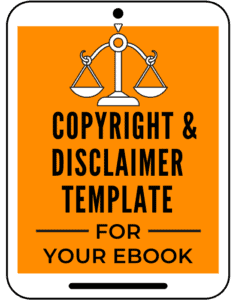
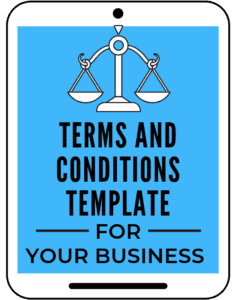
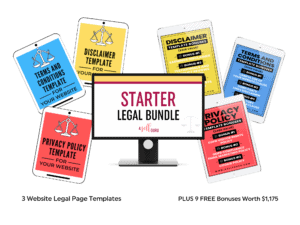
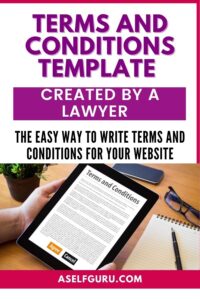

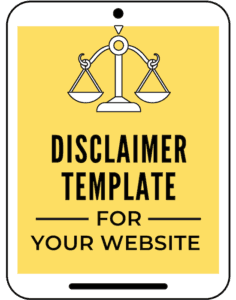



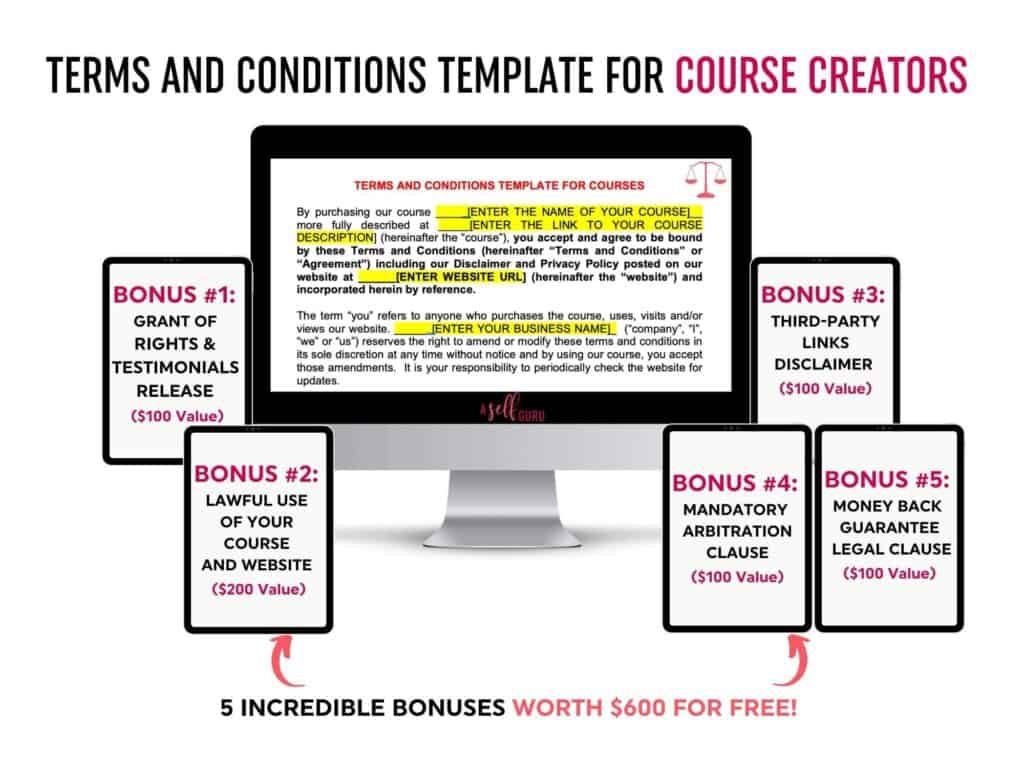
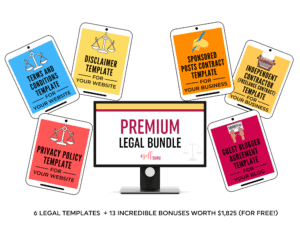
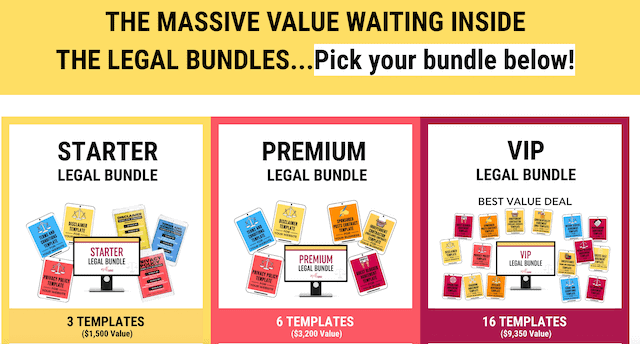
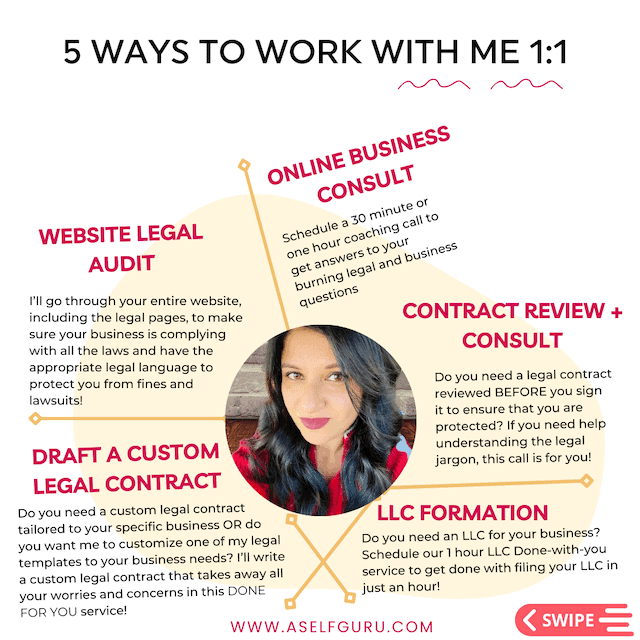

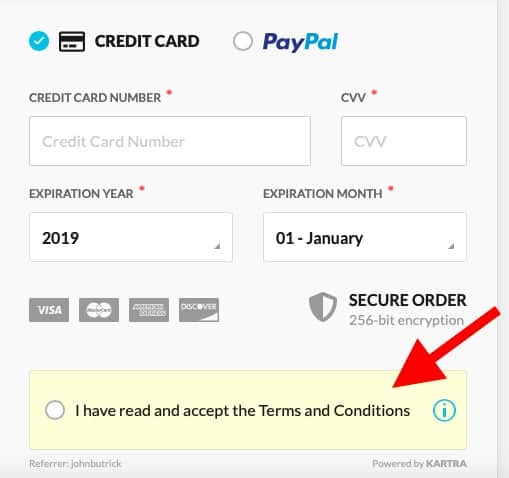

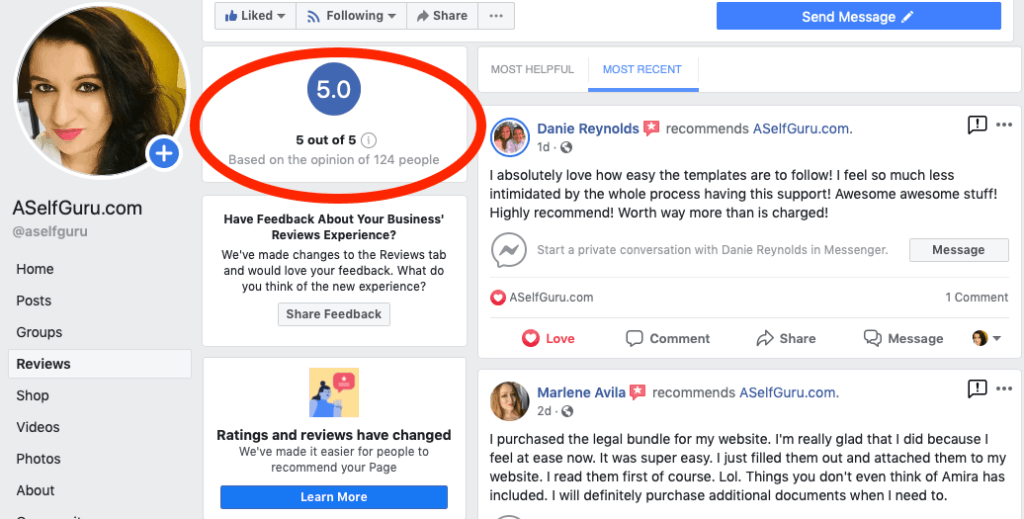










Amira,
Hardly, we could see the unique and personalized ‘terms & conditions’. Appreciate your efforts helping others to understand how critical it is to have brandable policies and regulations that resonates to the brand.
Thank you, Mark! Glad to help.
YES! Creating the proper terms and conditions is so important. There isn’t a lot of room for error on these sorts of things. Love this!
Thanks, Lyssa! Glad this post helped you!